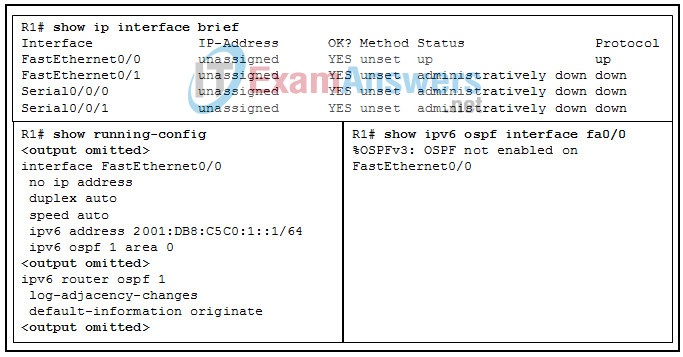Refer to the exhibit. An administrator is trying to configure R1 to run OSPFv3 but the neighbor adjacency is not forming with the router connected to Fa0/0. What is the cause of the problem?
- No router ID has been configured.
- FastEthernet0/0 has been configured as a passive interface.
- A link-local address has not been configured on interface FastEthernet0/0.
- The OSPF process ID and area values are backwards in the interface configuration.
Explanation: The output of show ipv6 ospf interface fa0/0 shows that OSPFv3 is not enabled on the interface even though the command is in the running configuration. This is because no router ID has been configured on this router. The router ID in OSPFv3 is a 32 bit number, similar to the ID in OSPFv2. If the router ID is not manually specified then an IPv4 address from one of the interfaces is used instead. This router has no IPv4 addresses configured on it so a router ID cannot be automatically chosen. The router-id command must be configured under ipv6 router ospf 1 in order to fix this problem.
Exam with this question: CCNP ENARSI 8 Modules 6 - 10 Checkpoint Exam: OSPF Exam
Exam with this question: CCNA 3 (v5.0.3 + v6.0) Chapter 5 Exam Answers
Exam with this question: CCNP ENARSI v8 Certification Practice Exam
Please login or Register to submit your answer
